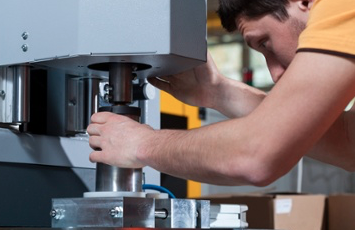U.S. Leverages HPC, Analytics For Smart Manufacturing

A smart manufacturing initiative launched last month by the Obama administration would seek to jumpstart an early version of an industrial Internet of Things via networks of smart sensors to be used for advanced manufacturing.
The White House announced the $140 million public-private partnership during a manufacturing summit in Washington. Among the participants in the new Clean Energy Smart Manufacturing Innovation Institute are several California universities, including the institute's headquarters at the University of California at Los Angeles and the San Diego Supercomputer Center at UC-San Diego.
The smart manufacturing initiative is the latest in a series of "hubs" funded by the Obama administration to reinvigorate U.S. manufacturing. The UCLA institute was awarded a five-year, $70 million grant by the U.S. Energy Department. Besides the clean energy emphasis, members said the smart manufacturing effort would leverage the supercomputer centers' expertise in data analytics, cloud and HPC platforms.
Along with the UCLA-based institute, the Obama administration also announced a competition to create five additional manufacturing hubs under an $800 million public-private effort.
Besides UCLA, the smart manufacturing initiative also includes four other regional centers. Texas A&M University will lead the Gulf Coast center with a focus on the chemical, oil and gas sectors. Rensselaer Polytechnic Institute will head a northeast U.S. center concentrating on glass, ceramic and microelectronic manufacturing. Pacific Northwest National Laboratory will lead a hub in the northwest while North Carolina State oversees a regional hub for the southeast U.S.
"The Smart Manufacturing Innovation Institute will use an open-source digital platform and technology marketplace to integrate advanced sensors, controls, platforms and modeling technologies into commercial smart manufacturing systems," the White House said. "The institute will also provide the manufacturing communities with easy and affordable access to real-time analytic tools, infrastructure and industrial applications."
Jason Miller, a presidential advisor on manufacturing policy, said the smart manufacturing effort is part of an overarching administration initiative called the National Network for Manufacturing Innovation. "Innovation and U.S. manufacturing are inextricably linked," Miller noted in a blog post.
The administration's goal is to establish 15 regional manufacturing research hubs by the end of 2016 that would "sharpen America’s competitive edge in spurring the next generation of manufacturing jobs and investment," Miller added.
While the Obama administration has placed greater emphasis on reviving U.S. manufacturing, efforts like the smart manufacturing initiative are mostly about designing the platforms that would serve as tomorrow's manufacturing equipment. Hence, it parallels industry efforts to connect all elements of the factory floor into an industrial IoT. Manufacturing equipment and supply chains connected by networks of smart sensors are seen as the earliest form an operational IoT network.
The market watcher IHS makes the case that an industrial IoT with application segments ranging from building automation to energy could be the first to leverage the cloud and datacenter plumbing that will underpin the IoT. For now, IHS sees islands of connectivity that lack connections to the outside world. It also sees data analytics as a "long-term play" as the IoT eventually morphs to the Internet of Everything.
The administration's manufacturing effort also includes a long list of industry partners representing the aerospace, electronics, energy, industrial automation, pharmaceutical, advanced materials and semiconductor sectors. Among the large enterprise IT participants are Google (NASDAQ: GOOGL) and Microsoft (NASDAQ: MSFT).
Related
George Leopold has written about science and technology for more than 30 years, focusing on electronics and aerospace technology. He previously served as executive editor of Electronic Engineering Times. Leopold is the author of "Calculated Risk: The Supersonic Life and Times of Gus Grissom" (Purdue University Press, 2016).











